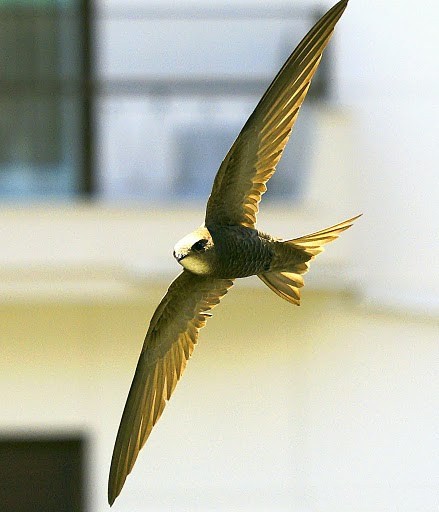Pallid Swift
A species of Typical Swifts Scientific name : Apus pallidus Genus : Typical Swifts
Pallid Swift, A species of Typical Swifts
Botanical name: Apus pallidus
Genus: Typical Swifts
Content
Description General Info
Description
The pallid Swift is a graceful bird known for its long, narrow wings and pale, sandy-brown plumage. It inhabits cliffs and canyons, often near water, and feeds on insects while in flight. During the breeding season, the Pallid Swift forms large colonies and engages in spectacular aerial displays. The species is widespread across much of Europe and Africa. With its distinctive appearance and aerial hunting tactics, the swift is a captivating bird to watch and admire. 
Size
16 cm
Nest Placement
Building
Feeding Habits
Pallid Swift predominantly feeds on flying insects, with a diet comprising 56% Hymenoptera, 25% Hemiptera, 12% Diptera, 5% Coleoptera, and 1% each of Lepidoptera, Odonata, and spiders. Exhibits gregarious foraging, often alongside other swifts, capturing diverse prey mid-flight.
Habitat
Pallid Swift resides in coastal and urban areas, ranging from islets to the central Sahara's continental zones. Their habitats include cliffs, gorges, and frequently cities, where they nest. Adaptable in foraging, they span from sea level to elevations up to 2700 meters, including mountainous regions with coniferous woodlands and near ski resorts.
Dite type
Insectivorous
General Info
Feeding Habits
Bird food type
Distribution Area
Pallid swifts breed on cliffs and eaves around the Mediterranean and on the Canary Islands and Madeira, laying two eggs. Like swallows, they are migratory, winter in southern Africa or southeast Asia. They are rare north of their breeding areas, although they are likely to be under-recorded due to identification problems. Because of its more southerly range, pallid swift arrives earlier and leaves later than the closely related common swift, so particularly early or late swifts north of the normal range should be carefully observed. 
Species Status
Not globally threatened.
Scientific Classification
Phylum
Chordates Class
Birds Order
Swifts and hummingbirds Family
Swifts Genus
Typical Swifts Species
Pallid Swift 